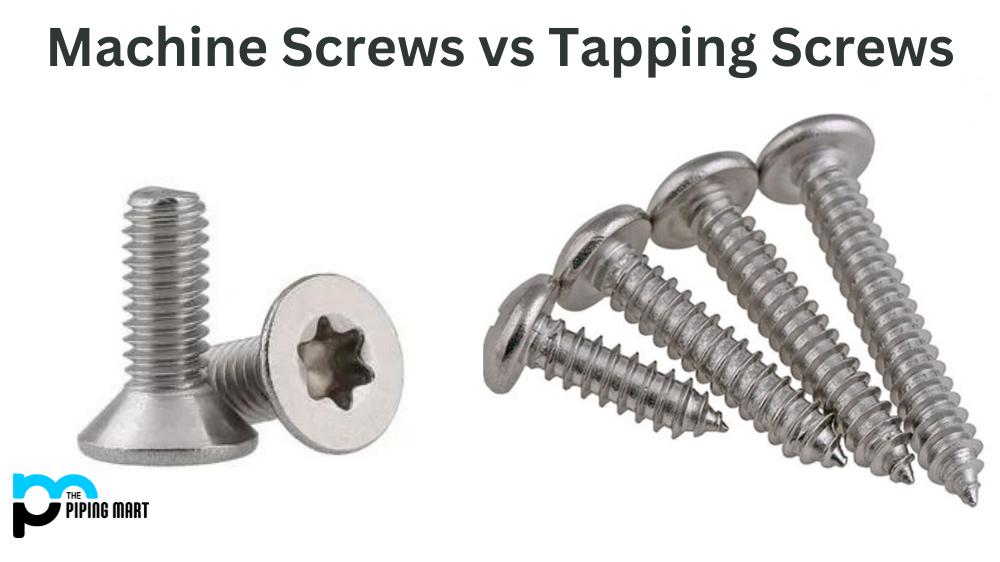Machine Screw vs Tapping Screw – What’s the Difference
| 11:49 pm


Regarding construction and DIY projects, screws are crucial to the outcome’s success. Selecting the correct type of screw can make all the difference in terms of your project’s ease of installation, durability, and overall finished look. Two common types of screws used for different purposes are machine screws and tapping screws. This blog post will explore the differences and similarities between these two types of screws so you can make an informed decision for your next project.
What are Machine Screws?
Machine screws feature a constant diameter and are threaded only partially, meaning they are designed to be used with a corresponding nut or threaded hole. They are typically used in machinery, electronics, and other appliances because of their durability and longevity. They come in different types of heads and can be used with additional drivers, such as flathead, Phillips, or socket. Machine screws are less likely to strip their threads or break under high pressure than tapping screws, making them ideal for weight-bearing projects.
What are Tapping Screws?
Tapping screws, on the other hand, have a pointed end designed to tap into materials, such as wood or plastic, creating threads and eliminating the need for a nut or threaded hole. They come with various head types, including flat, hex, and pan, and may require different drivers depending on the head type. Tapping screws are ideal for applications where speed is essential and there is no need for a robust and tamper-resistant joint.
Difference Between Machine Screws and Tapping Screws
One of the most significant differences between machine screws and tapping screws is their threading. Machine screws require a corresponding nut or threaded hole for installation while tapping screws create their threads in the material. Tapping screws are usually shorter and have sharper points than machine screws. Both types of screws are available in various head types and can be used with different drivers. Selecting the head and driver types is crucial based on your specific need and project.
- Machine screws are screws that are designed to be used with a machine screwdriver or a drill.
- Tapping screws are screws that are designed to be used with a tap wrench or a drill.
- Machine screws are available in various sizes and styles, while tapping screws are available in a limited number.
- Machine screws are typically made from steel, while tapping screws are made from brass or stainless steel.
- Machine screws can be used in various applications while tapping screws are typically used in woodworking applications.
- Machine screws typically have a higher tensile strength than tapping screws, making them better suited for applications with high levels of force.
- Tapping screws typically have a higher shear strength than machine screws, making them better suited for applications where high levels of force will be applied in the opposite direction.
- Machine screws and tapping screws are available in either standard or metric sizing.
Conclusion
When selecting the correct type of screw, it is crucial to understand their differences and similarities. Machine screws are ideal for applications requiring strong and durable joints, such as machinery and electronics. In contrast, tapping screws are better suited for projects requiring quick and easy installation, such as woodworking. Along with the head type, selecting the correct type of driver for each screw type is essential for optimal results. We hope this blog post has provided valuable insights and helped you decide on your next project.


Meet Bhavesh, a seasoned blogger with a wealth of knowledge and experience. From metal products manufacturing to retail, Bhavesh has a diverse background in various industries and is dedicated to sharing his insights and expertise with readers.